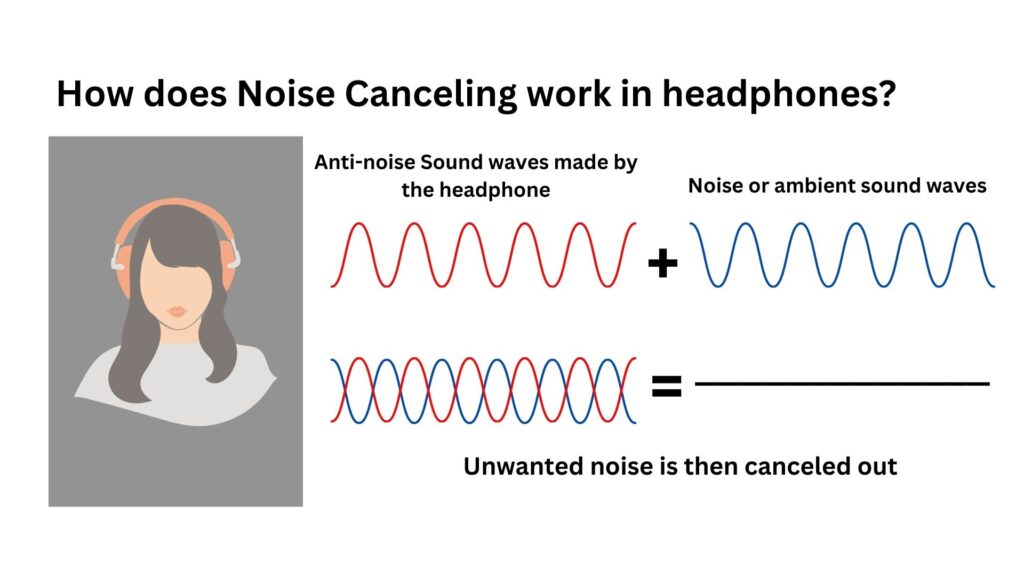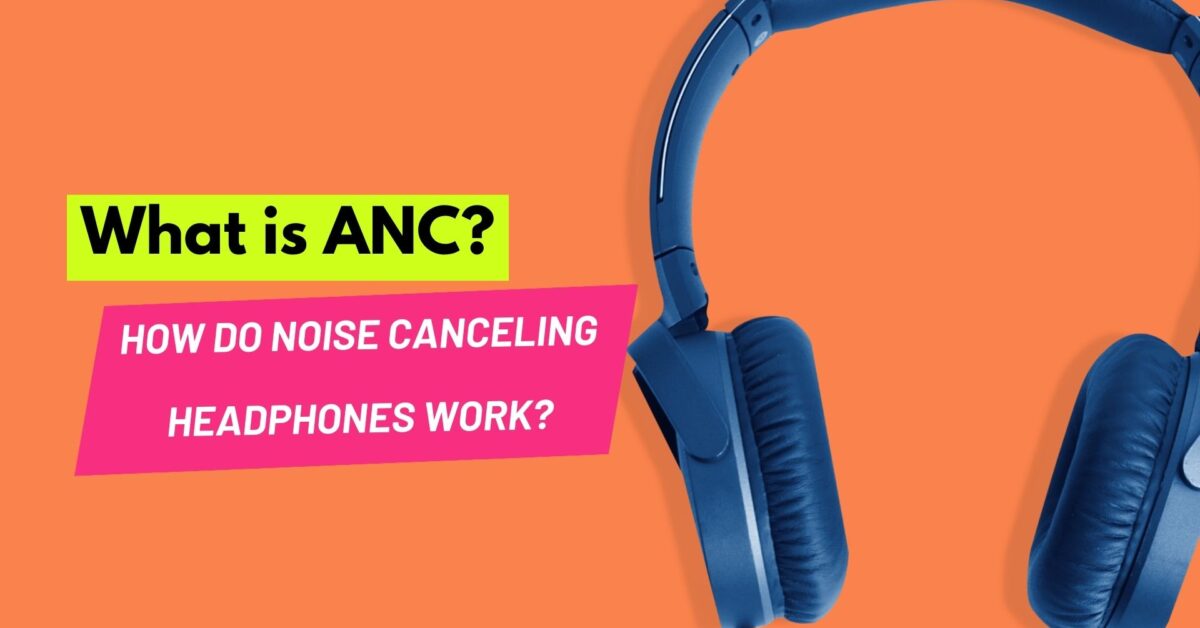Noise canceling headphones are a popular choice for many people who want to enjoy their music or podcasts without being disturbed by the ambient noise around them. But how do they actually work? And what is ANC, or active noise canceling, that makes them so effective?
What is Noise?
Noise refers to any sound that is unwelcome and disrupts your ability to listen effectively. It can originate from different sources including traffic, airplanes, trains, office conversations, or even your own breath. Prolonged exposure to noise can have negative impacts on your mood, focus, and overall well-being.
How Do Noise Cancelling Headphones Work?
Noise canceling headphones are specifically engineered to decrease or eliminate undesired background noises through the use of both hardware and software technology. They contain built-in microphones that pick up the ambient noise around you. The headphones then analyze the sound waves and generate an opposite sound wave, known as an anti-noise, which is played through the headphones. This anti-noise cancels out the incoming noise, resulting in a quieter listening environment for the user. This process is called active noise cancellation, or ANC. Additionally, some advanced noise-canceling headphones can also use passive noise isolation techniques, such as padding and sealing, to block out external sounds further.
What is ANC or active noise cancellation?

ANC is an abbreviation for active noise canceling, which is a technology designed to minimize undesired background noise by generating a sound wave that counteracts the noise. This sound wave cancels out the noise, creating a quieter environment for you to listen to your audio. ANC works by using microphones and speakers inside the headphones to measure and generate the anti-noise signal.
There exist two types of ANC: feedforward and feedback. Feedforward ANC uses a microphone on the outside of the earcup to capture the noise before it reaches your ears. The headphones then generate an anti-noise signal and play it through the speakers inside the earcup. Feedback ANC uses a microphone inside the earcup to measure the noise that has already reached your ears. The headphones then adjust the anti-noise signal accordingly and play it through the speakers. Some headphones use both feedforward and feedback ANC to achieve better noise cancellation. They can also use different algorithms and modes to optimize the ANC performance for different situations, such as low-frequency or high-frequency noise or different levels of ambient sound.
What is passive noise cancellation?
Passive noise canceling, or noise isolating, is a technique that uses physical barriers, such as ear cups, ear tips, or ear muffs, to block or reduce the noise that reaches your ears. It works by creating a seal around your ears that prevents or attenuates the sound waves from entering your ear canal. Also, it does not require any additional technology or battery to achieve noise reduction, unlike active noise canceling (ANC).
Passive noise canceling can be effective for high-frequency noises, such as human voices, but it cannot cancel out low-frequency noises, such as engine hum, that ANC can. Also, they can potentially cause discomfort or pain when worn for extended periods, due to the possible pressure or friction it may exert on your ears or head.
How does ANC compare to passive noise canceling?
ANC, short for active noise canceling, employs microphones and speakers to generate a sound wave that counters the incoming noise, resulting in a quieter listening experience. On the other hand, passive noise canceling, also referred to as noise isolation, relies on physical barriers like ear cups, ear tips, or ear muffs to obstruct or diminish the noise that reaches your ears. The main difference between ANC and passive noise canceling is that ANC actively counters the noise by generating an anti-noise signal, while passive noise canceling passively reduces the noise by creating a seal around your ears.
Advantages of ANC
- It can cancel out low-frequency noises like engine hum that passive noise canceling cannot.
- Eliminating background noise that obscures the subtleties and details in your podcasts or music can enhance the quality of your audio.
- Reducing outside distractions and fostering a calmer, more comfortable listening environment can improve your concentration and productivity.
Disadvantages of ANC
- It is more expensive than passive noise cancellation because it requires more components and technology to achieve ANC.
- It has a shorter battery life than passive noise canceling because the ANC system and microphones must be powered.
- When the ANC is turned on, it produces a slight hiss or white noise, which some people may find annoying or distracting.
- It may degrade the sound quality of your audio because the ANC may introduce distortion or artifacts or alter the frequency response of the headphones.
- It isolates you from your surroundings, which may be dangerous or inconvenient in some situations, such as crossing the street, driving, or talking to someone.
Advantages of passive noise cancelling
- It is less expensive than ANC because it does not require any additional technology or battery to achieve passive noise cancellation.
- It has a longer battery life than ANC because it does not need to power any system or microphones. Some headphones don’t even need a battery for passive noise cancellation, as they rely on wired connections to the audio source.
- As no sound waves are produced, there is no hiss or white noise.
- Because it doesn’t tamper with the sound waves or frequency response of the headphones, it maintains the quality of your audio.
- It lets you hear some of the background noise, which can be helpful or required in certain circumstances, like being aware of your surroundings, hearing announcements, or interacting with other people.
Disadvantages of passive noise cancelling
- It cannot cancel out low-frequency noises like engine hum like ANC can.
- It may not improve your audio quality as much as ANC because it does not reduce the noise that masks the details and nuances of your music or podcasts.
- It may not improve your focus and productivity as much as ANC because it does not block out distractions and creates a more peaceful and comfortable listening environment.
- Wearing it for an extended period of time may be uncomfortable or painful due to pressure or friction on your ears or head.
What are the benefits of noise-cancelling headphones?
Noise-canceling headphones have many benefits, such as:
- Improving your audio quality by reducing the noise that masks the details and nuances of your music or podcasts.
- Enhancing your focus and productivity by blocking out distractions and creating a more peaceful and comfortable listening environment.
- Protecting your hearing by allowing you to listen at lower volumes and lowering your risk of noise-induced hearing loss.
- Reducing your stress and fatigue by lowering your exposure to noise and improving your mood and well-being.
What are the drawbacks of noise-cancelling headphones?
Noise-canceling headphones also have some drawbacks, such as:
- Being more expensive than regular headphones, as they require more components and technology to achieve ANC.
- Having a shorter battery life than regular headphones, as they need to power the ANC system and the microphones.
- Creating a slight hiss or white noise when the ANC is on, which some people may find annoying or distracting.
- Reducing the sound quality of your audio, as the ANC may introduce some distortion or artifacts or alter the frequency response of the headphones.
- Isolating you from your surroundings, which may be dangerous or inconvenient in some situations, such as crossing the street, driving, or talking to someone.
How do you choose the best noise-canceling headphones for you?
Noise-canceling headphones come in different shapes, sizes, and features, so you need to consider your personal preferences and needs when choosing the best one for you. Some factors to consider are:
- The type and level of noise cancellation you want depends on the noise sources and environments you encounter most often.
- The sound quality and performance of the headphones, including the frequency response, distortion, clarity, and balance of the audio.
- The comfort and fit of the headphones, including the weight, size, shape, and material of the earcups and headband.
- The battery life and charging options of the headphones, including the duration, speed, and convenience of the charging process.
- The additional features and functions of the headphones include wireless connectivity, voice assistant compatibility, touch controls, ambient sound mode, and app support.
What are some examples of headphones with noise cancellation?
There are several examples of headphones with noise cancellation available in the market. Here are some suggestions:
- Bose QuietComfort Ultra Headphones: Bose’s QuietComfort series is well-known for its ANC technology. The QuietComfort Ultra is the latest addition to the series, offering exceptional noise-cancellation performance. That being said, their earlier versions, like the Bose QuietComfort 45 and Bose QuietComfort 35 II, are also highly recommended for their noise-cancellation capabilities.
- Sony WH-1000XM5: Another headphone well-known for its noise-canceling technology is the Sony WH-1000XM5. These headphones offer industry-leading noise cancellation and are praised for their superior sound quality. Also, they are great overall. Alternatively, its previous version, the Sony WH-1000XM4, is also highly regarded for its noise-cancellation capabilities and sound performance. Both models provide a comfortable fit and long battery life, making them popular choices among audiophiles and frequent travelers.
- Apple AirPods Max: It is the best noise canceling headphones for iPhone users. The AirPods Max provide a seamless and effortless user experience due to their seamless integration with Apple devices. However, it is very expensive, especially since it was released in late 2020.
- Anker Soundcore Life Q30 & Anker Soundcore Space One: If you are looking for noise canceling headphones at a more affordable price point, the Anker Soundcore Life Q30 and Anker Soundcore Space One are excellent options to consider.
These are just a few examples of headphones with noise cancellation available in the market. Each brand offers its own unique features and advantages, so it’s important to consider your specific needs and preferences when choosing the right pair for you.
Conclusion
In conclusion, ANC refers to the technology used in noise-canceling headphones to reduce or eliminate unwanted background noise. This is achieved by using built-in microphones that identify surrounding sounds and generate sound waves that counteract the incoming noise, effectively removing it. This allows users to have a more immersive and uninterrupted audio experience. Also, there are passive ways to reduce background noise, such as using noise-isolating headphones that physically block out external sounds. However, ANC takes it a step further by actively counteracting the noise, making it a more effective solution for those seeking a truly quiet and immersive listening experience.
